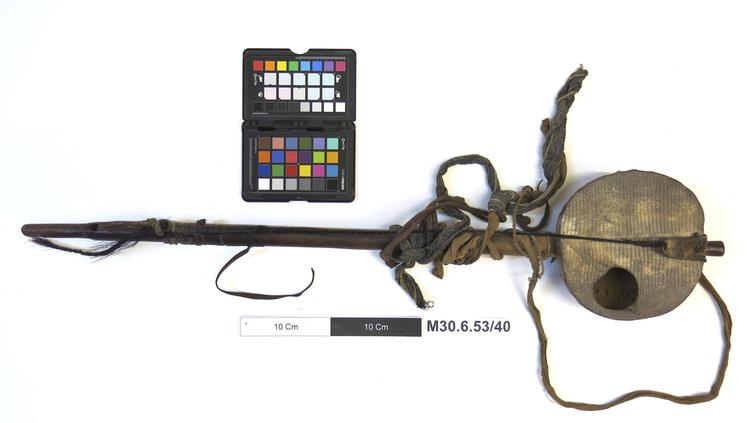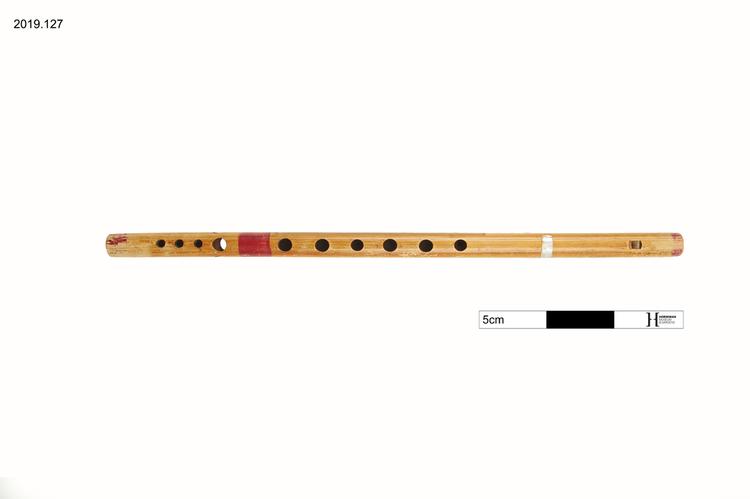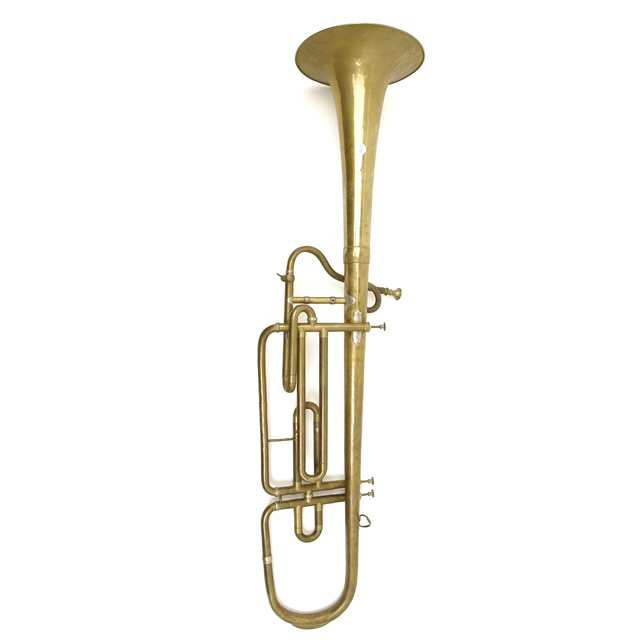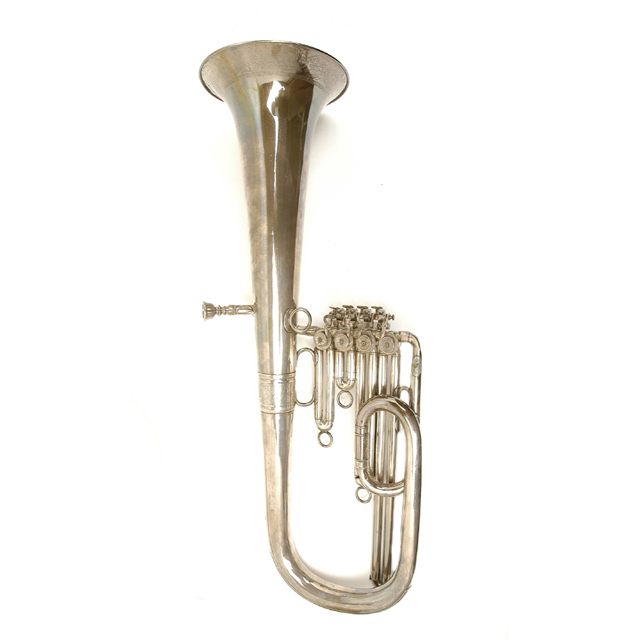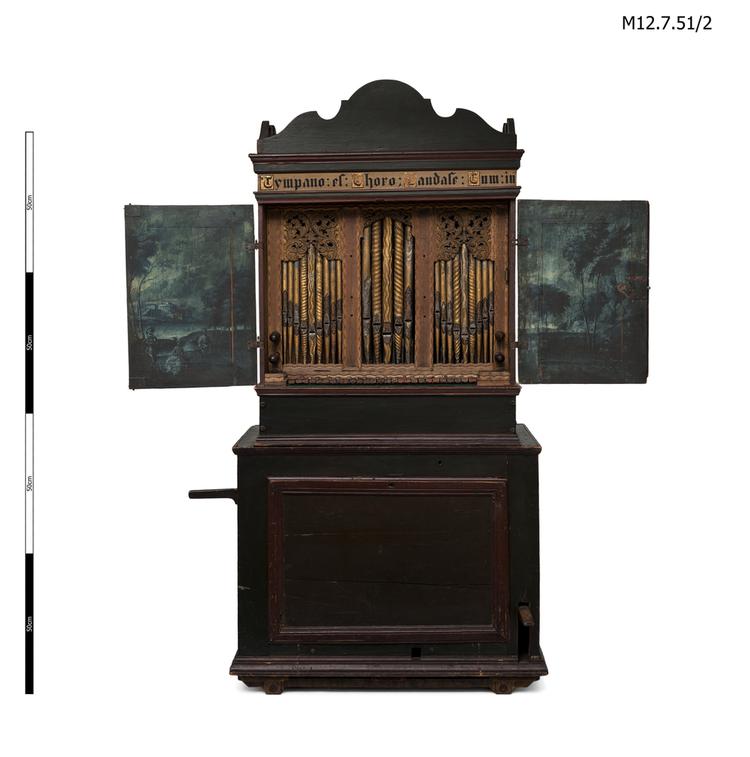
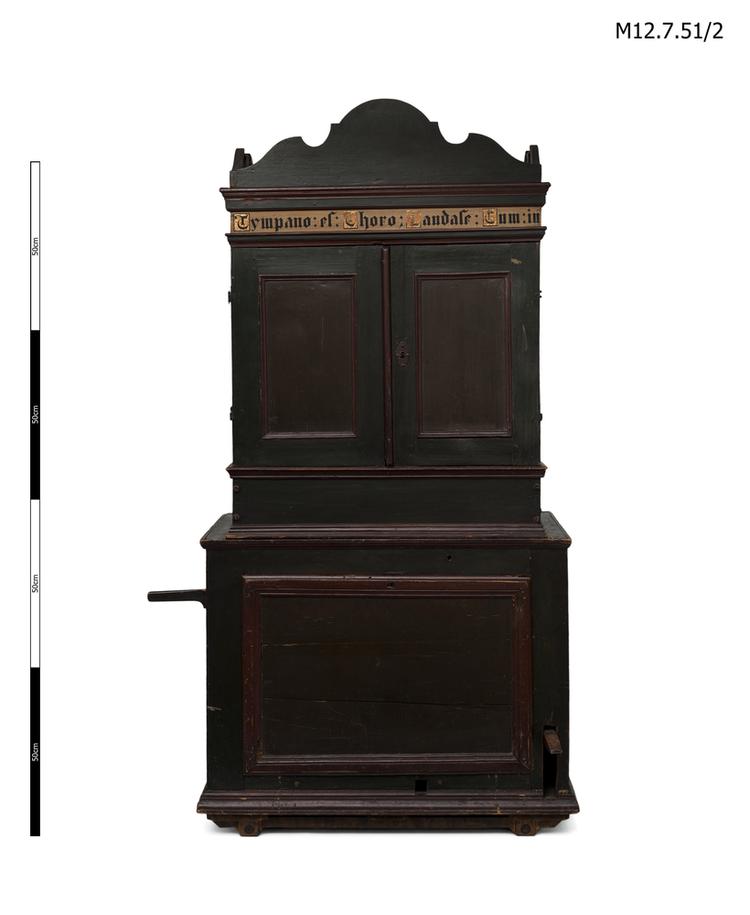
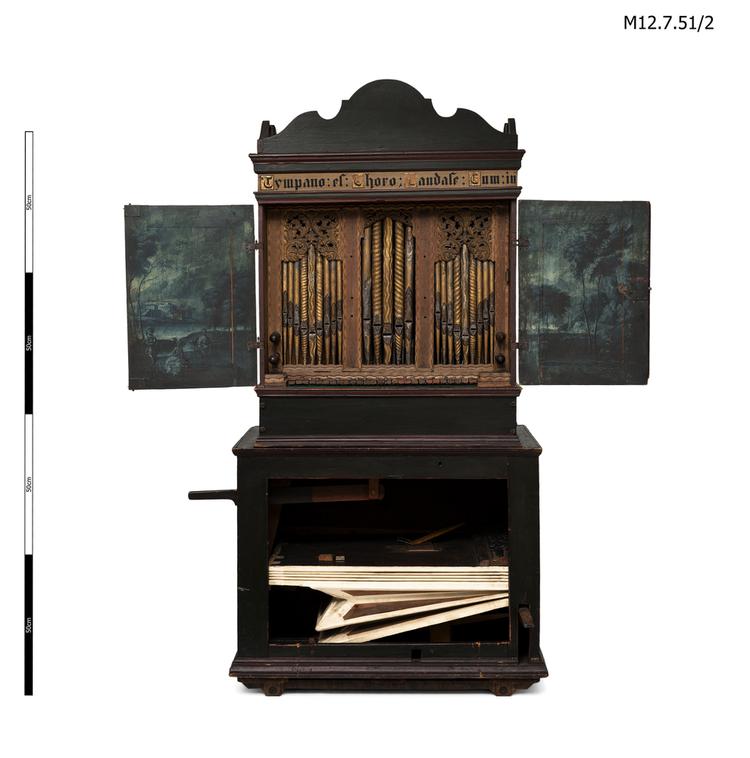
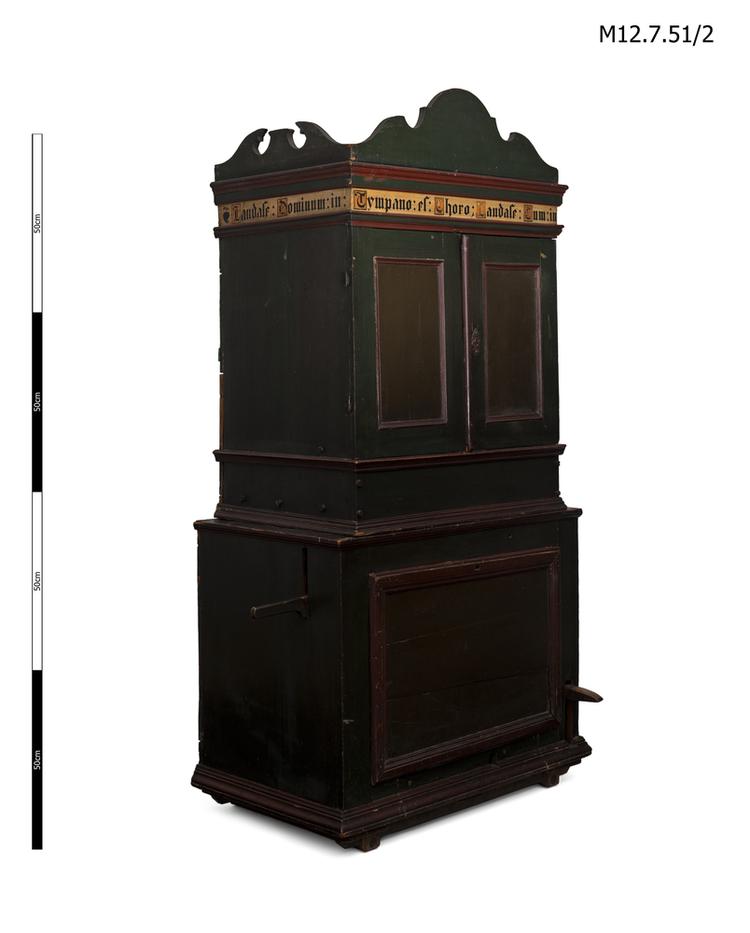
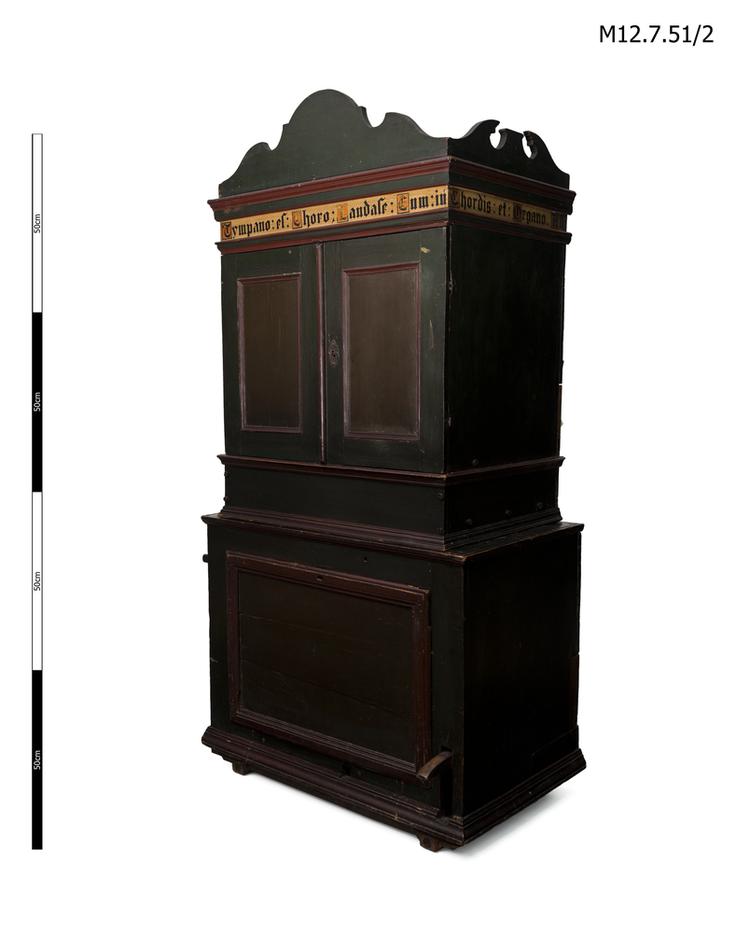
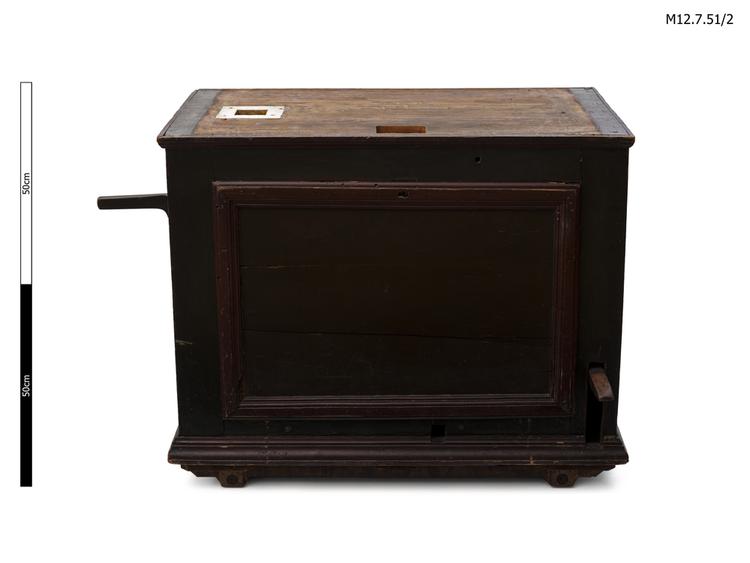
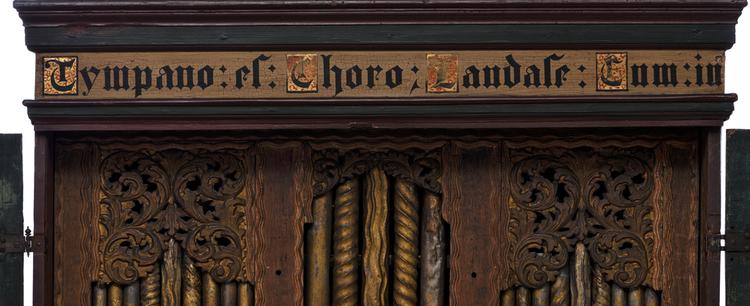
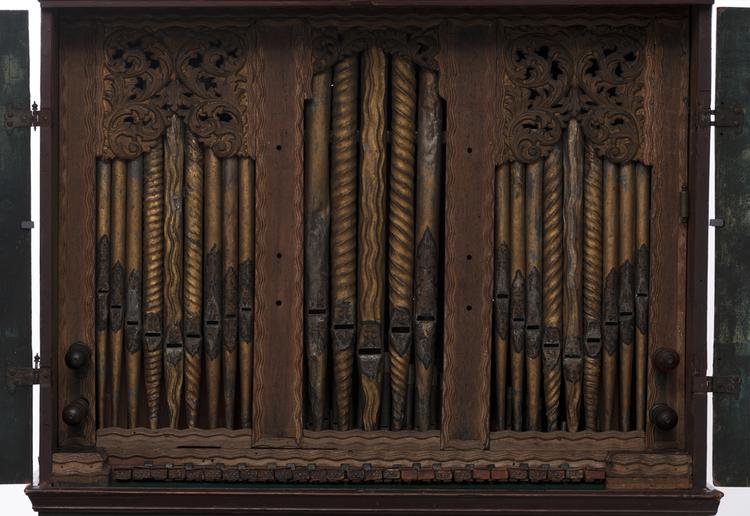
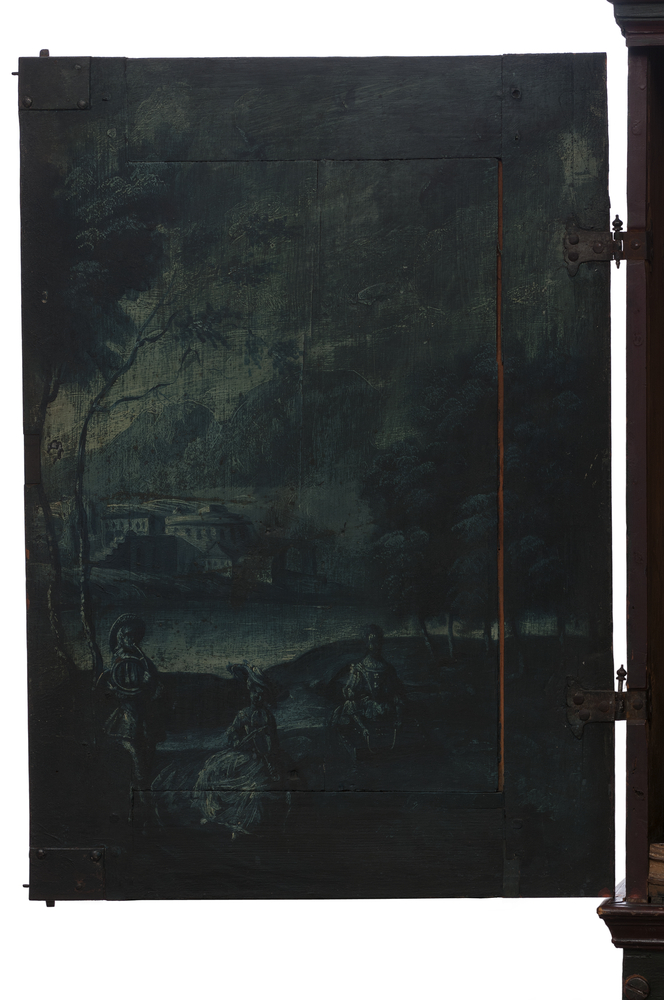
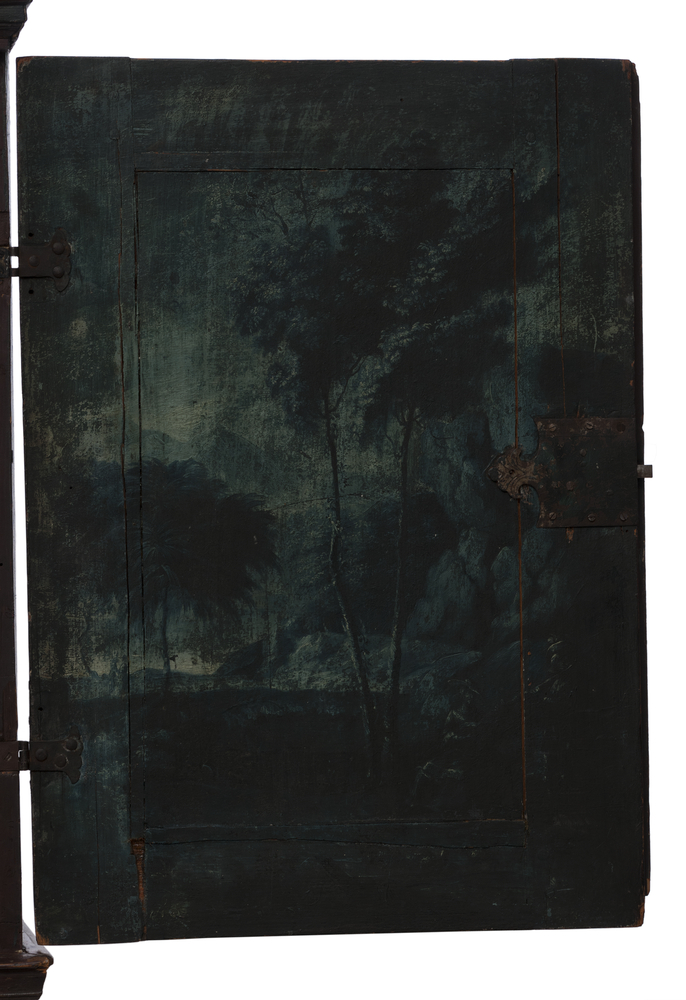
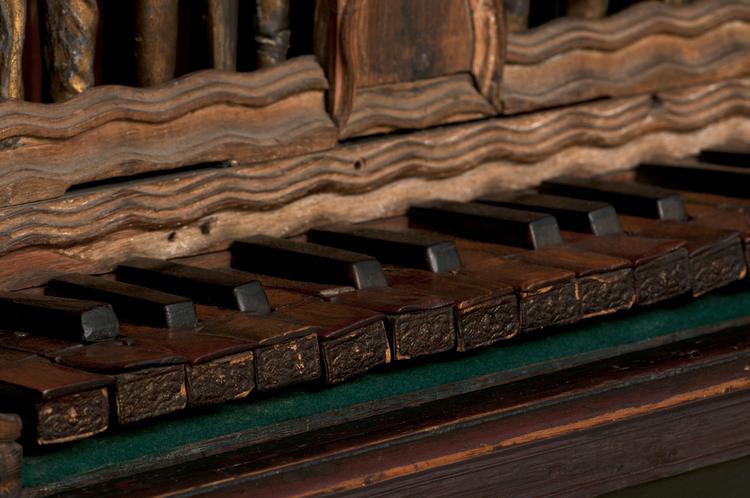
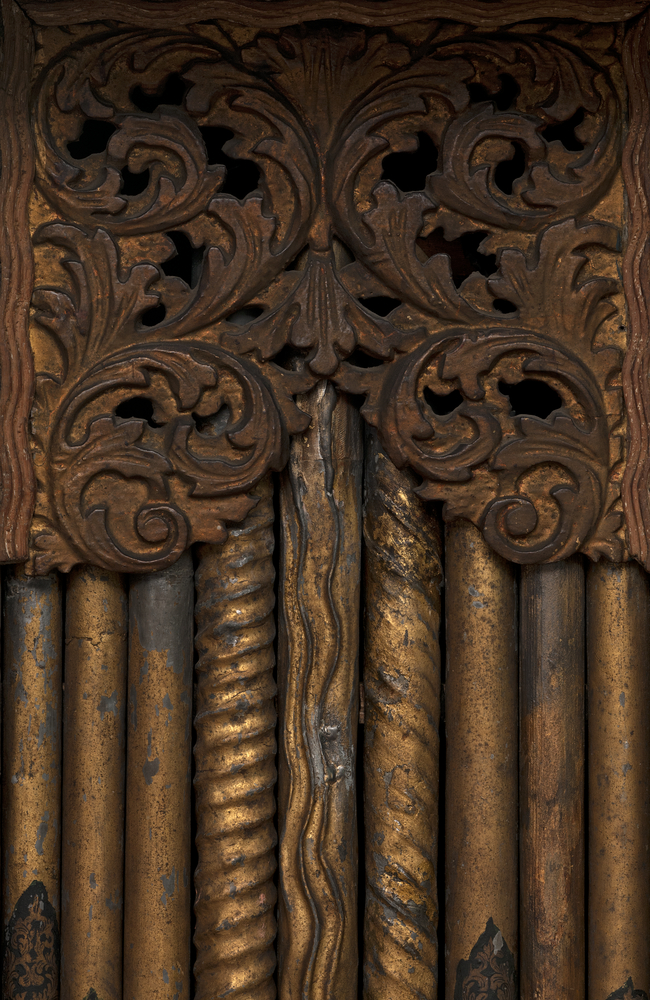
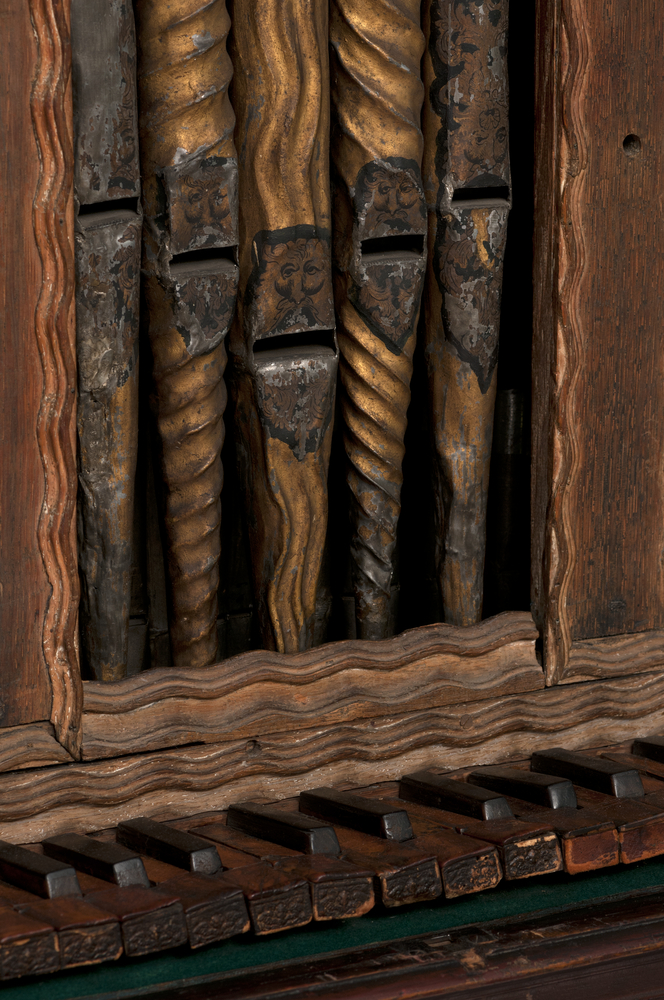
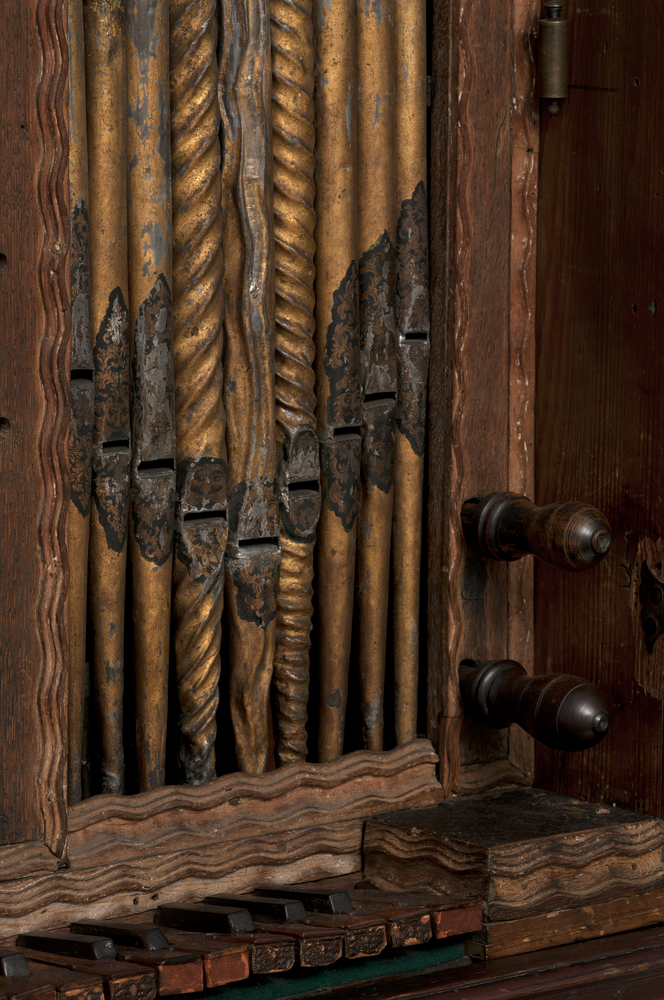
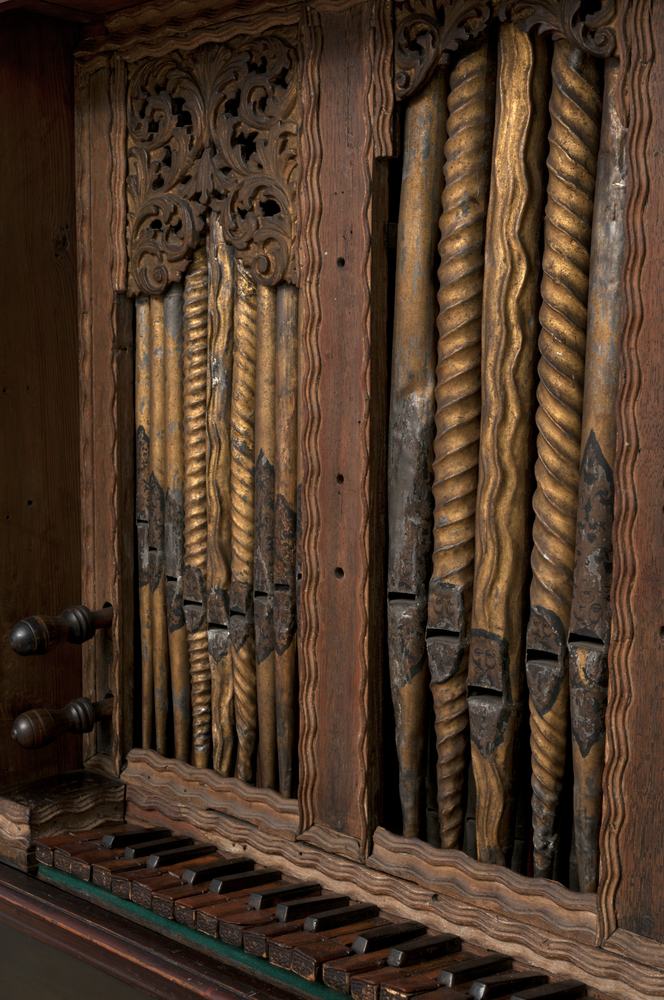

Chamber organ with music stand. Index card reads: Organ. Anonymous. Gift of Middlesex County Council. One manual, withouth pedals. Present (1971) compass chromatic E to c3, 45 notes. Four complete stops:- Gedackt 8', Flöte 4', Quint 2 2/3', Fifteenth (Principal) 2'. (Gedackt, stopped wood: Flöte, open wood: Quint, stopped and open wood: Fifteenth, open metal). The front pipes, (including seven dummies) are gilded and decorated, nine of them embossed, and stand in three flats with carved pipe shades. (for history, see over). Hand and foot blowing levers. Partially restored in 1971 by John Budgen of Bishop & Sons, Ipswich, and now (Aug. 1971) in playing order, but complete restoration requires dismantlement of the whole organ for restoration of the soundboard. Height: 2170 mm, Width: 1080 mm, Depth: 680 mm. REVERSE OF CARD: The pipes, soundboard, keyboard and action, and also the front are of 17th century origin and probably German. These components of the original organ appear to have been embodied in a late 18th or early 19th century reconstruction of the instrument, in which it was provided with the present case, bellows and reservoir. The case is of simple design and workmanship, painted bark green externally and lined out in dark red. The interiors of the doors enclosing the front are decorated with crudely-drawn landscapes in blue colours, that on the left including figures playing the horn, fiddle and dulcimer. A cream-coloured band below the pediment on three sides beards the inscription, in illuminated Gothic, "Laudate Dominum in Tympano et Choro; Laudate Eum in Chordis et Organo". Some restoration was carried out by Henry Willis & Sons in or about 1952, when the present chromatic compass was substituted for the original C/EE short octaves.
The early organ was a symbol of power, flaunting wealth and mechanical ingenuity combined. It played a part in ceremonies of worldly pomp and regal splendour long before its introduction into the church where both large and small organs were used. Eventually, the smaller, more portable organs found their way into palaces and manor houses, not only for home devotional use, but also for accompanying ensembles and providing dance music. From then onwards, the chamber organ developed a parallel and flourishing secular career. It remained popular until overtaken during the 19th century by the harmonium or reed organ, a cheaper alternative in which the sound is produced by air pumped through metal reeds rather than pipes. Formerly at Hampton Court House, this four stop organ has undergone many interventions during its long life. The front pipes and keyboard are probably original, but some of the internal pipework has been changed. The case decoration including the Latin inscription and the door paintings, date from the 19th century.



